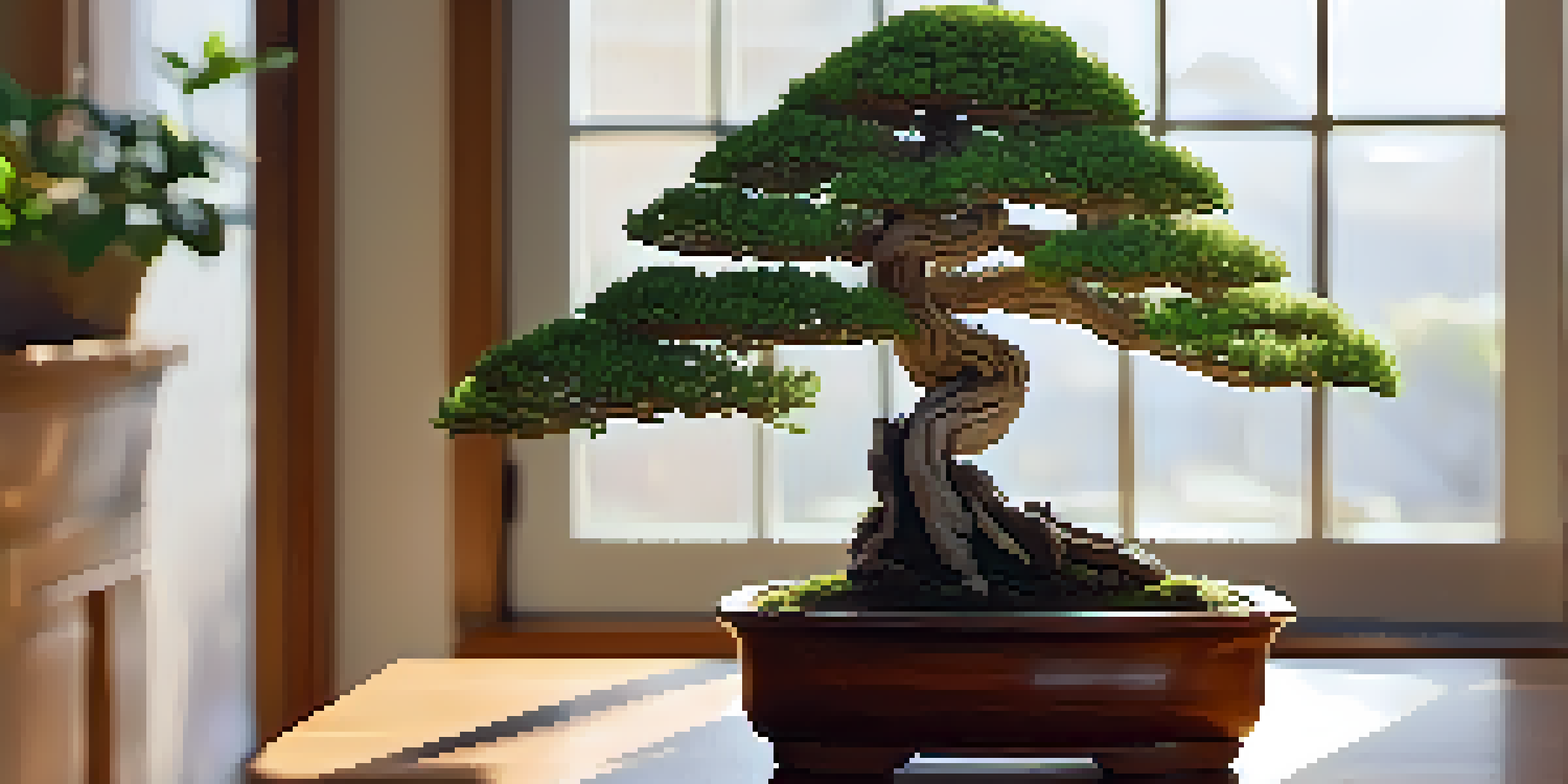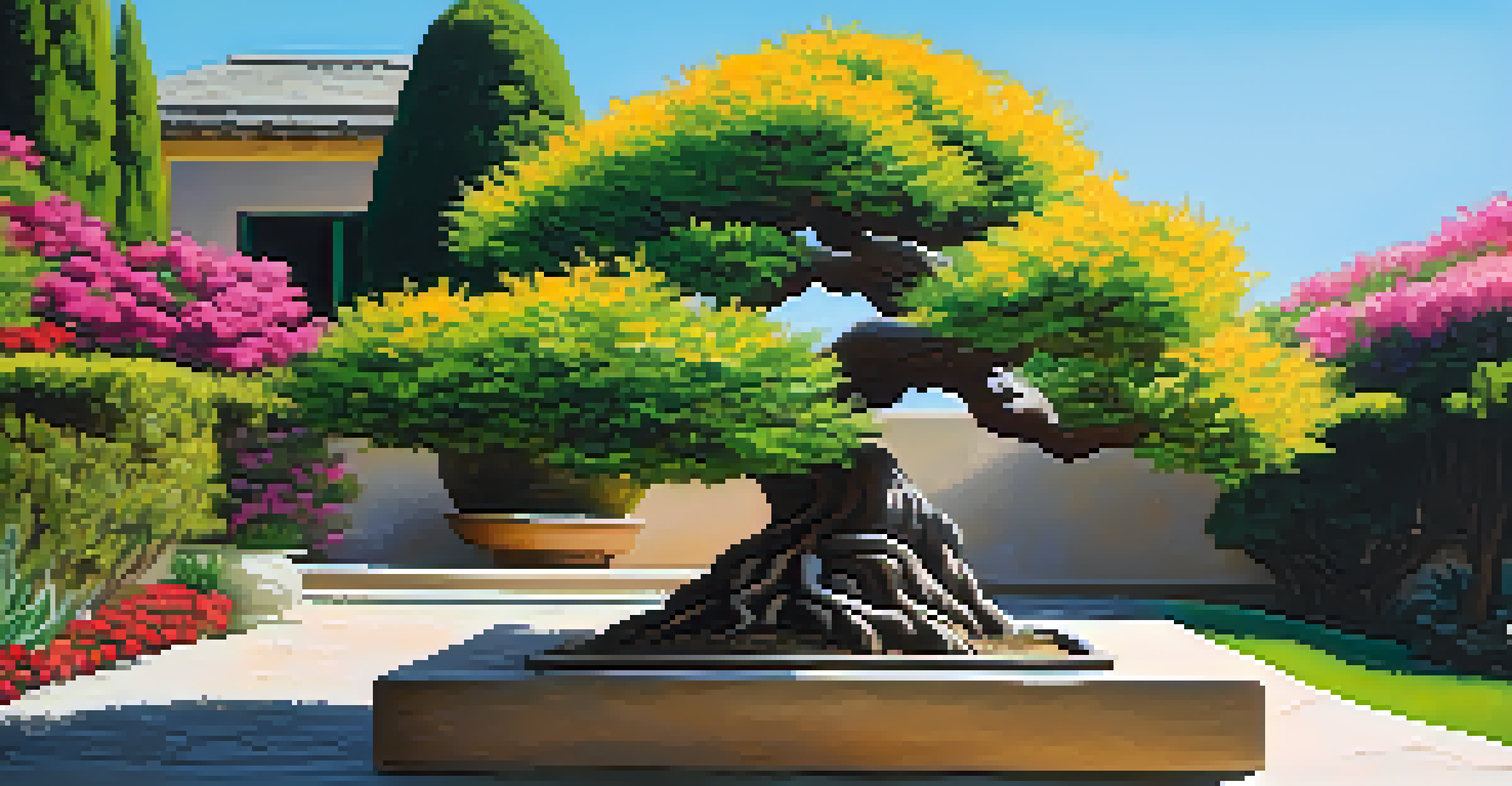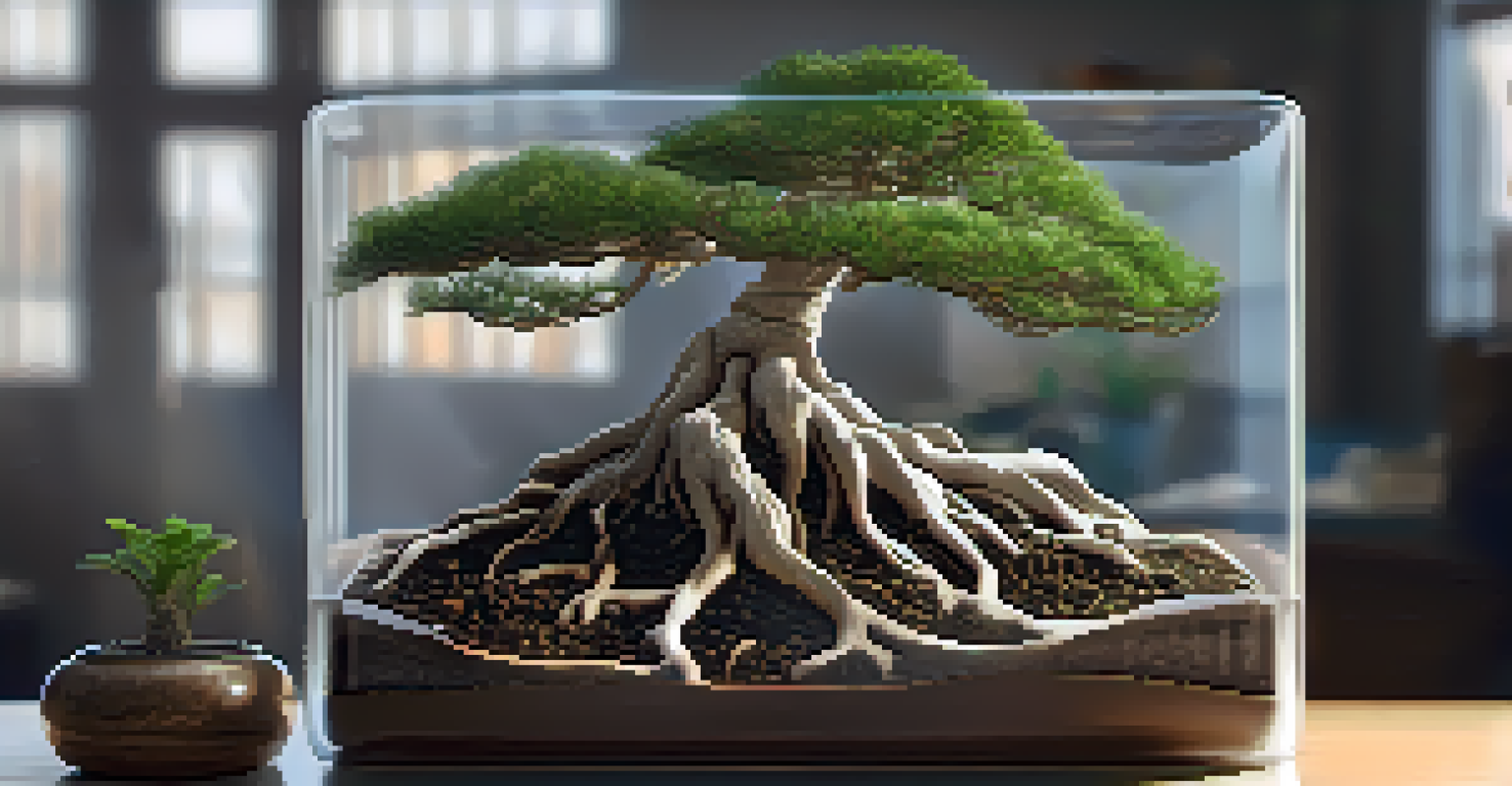Watering Techniques for Optimal Bonsai Growth

Understanding the Water Needs of Your Bonsai Tree
Every bonsai tree has unique water requirements based on its species, size, and environment. Understanding these needs is crucial in providing the right care. For instance, tropical species generally prefer consistent moisture, while conifers might need drier conditions between watering.
The best time to water your bonsai is when the soil is dry to the touch, not when it looks dry on top.
Factors like the pot size, soil type, and even the season can influence how much water your bonsai needs. A well-draining soil mix typically allows excess water to escape, preventing root rot. Therefore, assessing these variables is key to maintaining optimal watering routines.
By monitoring your bonsai closely, you can spot signs of over or under-watering. Yellowing leaves or wilting can indicate stress, prompting you to adjust your watering schedule accordingly. This attentive approach fosters a healthier bonsai that thrives in its environment.
Choosing the Right Watering Technique for Your Bonsai
There are several techniques for watering bonsai trees, and the best method often depends on your specific situation. Common techniques include top watering, bottom watering, and misting. Top watering involves gently pouring water over the soil, ensuring it seeps through the drainage holes.

Bottom watering is another effective technique where you place the bonsai pot in a shallow tray of water. This method allows the plant to absorb moisture from the roots up, which can be particularly beneficial for trees that dislike wet foliage. It's a great way to ensure even moisture distribution.
Understand Your Bonsai's Water Needs
Different bonsai species require varying amounts of water, influenced by factors such as pot size, soil type, and season.
Misting can also be beneficial, especially for tropical bonsai. This technique helps maintain humidity around the tree, which can be crucial during dry seasons. By combining these methods, you can create a customized watering routine that meets your bonsai's unique needs.
Signs of Overwatering and How to Avoid It
Overwatering is a common pitfall for many bonsai owners, leading to root rot and other health issues. The key signs include yellowing leaves, a mushy trunk, and a foul smell emanating from the soil. Recognizing these symptoms early can save your tree from serious damage.
Plants are like people. They need water, food, and a little love to thrive.
To avoid overwatering, always check the soil moisture before adding more water. A simple way to do this is by sticking your finger about an inch into the soil; if it feels damp, wait before watering again. This practice helps you establish a consistent watering routine that aligns with your bonsai's needs.
Additionally, using a well-draining soil mix is essential in preventing water from accumulating at the roots. Consider adding components like pumice or lava rock to enhance drainage. By being vigilant and proactive, you can keep your bonsai thriving.
Recognizing Signs of Underwatering in Bonsai Trees
Underwatering can be just as detrimental as overwatering, and identifying the signs is crucial for your bonsai's health. Common indicators include crispy leaves, brittle branches, and soil that feels dry to the touch. These symptoms suggest your tree is not getting the moisture it craves.
If you notice these warning signs, it's time to adjust your watering schedule. Gradually increase the frequency of watering, but ensure you're still adhering to the specific needs of your bonsai species. Remember, consistency is key in maintaining the right moisture levels.
Identify Signs of Watering Issues
Recognizing symptoms of both overwatering and underwatering, like yellowing leaves or dry soil, is crucial for maintaining your bonsai's health.
Moreover, providing adequate humidity can also help combat the effects of underwatering. Placing a humidity tray filled with water and pebbles beneath your bonsai can create a more favorable environment. With a little attention, you can reverse the effects of underwatering and keep your bonsai thriving.
The Importance of Seasonal Adjustments in Watering
As seasons change, so too do the watering needs of your bonsai tree. During the spring and summer months, when growth is at its peak, your bonsai may require more frequent watering. Conversely, in the fall and winter, you may notice a decrease in water needs as the tree enters a dormant phase.
Understanding these seasonal shifts allows you to tailor your watering routine effectively. For example, during the hotter months, consider increasing your watering frequency or using a moisture meter to gauge the soil's needs. This approach helps ensure your bonsai remains hydrated without the risk of overwatering.
Additionally, factors such as temperature and humidity levels can influence your bonsai's water requirements. Keeping an eye on these environmental changes will empower you to make timely adjustments, ultimately leading to a healthier and more vibrant bonsai.
Best Practices for Watering Your Bonsai Tree
Establishing best practices for watering your bonsai tree can make a world of difference in its health and longevity. Start by always using room-temperature water, as cold water can shock the roots. This small detail can enhance the overall watering experience for your tree.
Another essential practice is to water thoroughly, allowing water to flow out of the drainage holes. This ensures that the entire root system receives adequate moisture, promoting even growth. It's also a good idea to water your bonsai early in the morning or late in the afternoon to minimize evaporation.
Adjust Watering for Seasonal Changes
As seasons shift, so do the watering needs of your bonsai, necessitating more frequent watering in spring and summer and less in fall and winter.
Lastly, keep a watering journal to track your bonsai's watering habits. Documenting your observations can help you identify patterns and adjust your techniques accordingly. With these best practices, you'll be well on your way to nurturing a thriving bonsai.
Tools and Equipment for Effective Bonsai Watering
Having the right tools can enhance your bonsai watering experience significantly. A quality watering can with a fine nozzle is essential for gently delivering water to your bonsai without disturbing the soil. This precise watering helps prevent soil erosion and ensures that moisture reaches the roots effectively.
Additionally, consider investing in a moisture meter, which can be a valuable tool for monitoring soil moisture levels. This device allows you to gauge when to water, taking the guesswork out of the process. It's particularly useful for beginners still learning their bonsai's needs.

Lastly, a humidity tray can help maintain moisture in the air around your bonsai. This is especially beneficial for tropical species that thrive in humid conditions. By equipping yourself with the right tools, you can create an ideal environment for your bonsai tree.